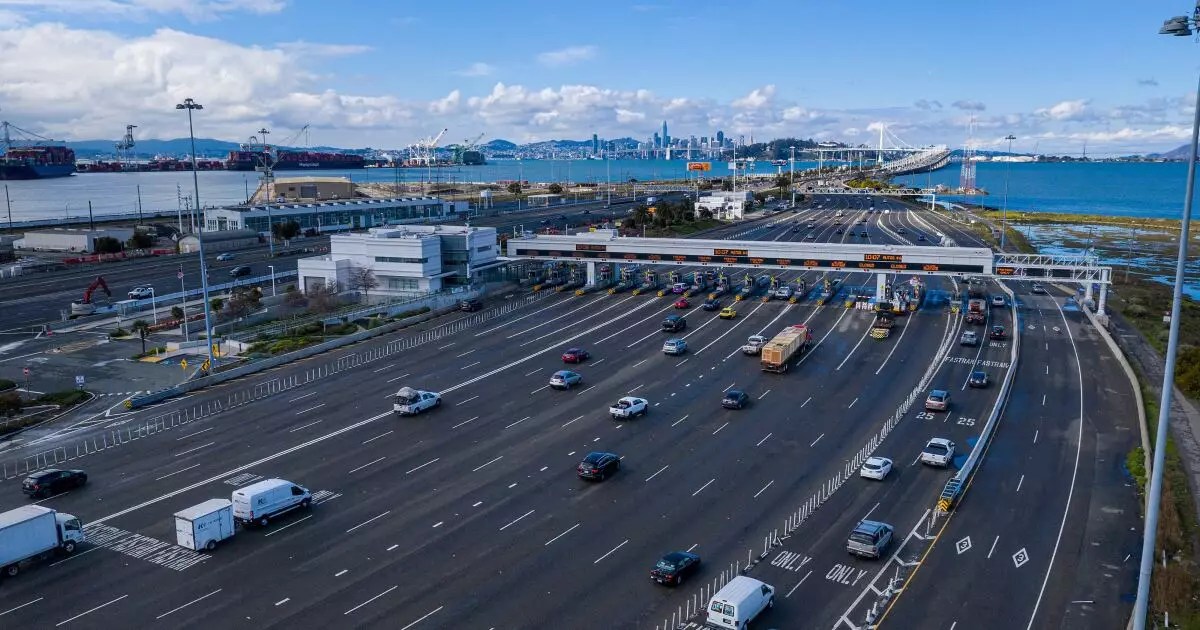The deteriorating condition of America’s roads and bridges has reached a critical point. With two-thirds of states considering new funding bills for transportation this year alone, it’s evident that traditional funding mechanisms—primarily the gas tax—are far from adequate in addressing the growing needs of our infrastructure. As vehicles become more fuel-efficient or switch to electric power, the gas tax revenue, which once formed the bedrock of transportation financing, is steadily declining. In this context, the recent approval of tolling measures, particularly in states like Indiana, highlights the urgency and complexity of the problem.
Tolling is being positioned by some as the necessary evil to rescue our crumbling infrastructure, and there are proponents on both sides of the political spectrum. While it may seem like anathema to those who value unfettered access to roads, this approach raises important discussions about how we define user responsibility. Legislation like Indiana’s House Bill 1461, which permits tolling on all interstate highways without additional legislative scrutiny, suggests that lawmakers are recognizing the fiscal reality of transportation funding—but at what cost to citizens who may already feel over-burdened by taxes?
Redefining User Fees and Accountability
A growing segment of lawmakers argues for a system where users pay directly for what they consume. This approach includes the implementation of electric vehicle fees and road usage charges that would necessitate a more equitable contribution to infrastructure maintenance and improvement. The idea here is straightforward: if you use the road, you pay for its upkeep. It sounds logical, but it also raises practical concerns about how these fees would be administered and collected, particularly from drivers who are currently disengaged from the existing gas tax model.
Moreover, such user fees could take various forms, leading to a patchwork of charges that could further complicate the financing landscape. Should rates be uniform, or should they vary by location and peak travel times? As states dive deeper into this debate, the risk of creating a politically divisive landscape increases—making public policy decisions even more contentious.
The Innovative Push from State Legislatures
This year, 37 states presented a staggering 130 transportation funding bills in the first quarter alone. Nearly 25% of these measures propose recurring revenue through new taxes and fees. For instance, Maryland’s recent legislation aims to generate $500 million using diverse funding sources. This is a clear indicator that despite the challenges, there’s an innovative streak growing among state-level policymakers.
Even states like North Carolina and Virginia are joining the conversation by employing more traditional financing methods such as bonds, allowing local governments to leverage anticipated revenues for immediate improvements. The innovation demonstrates a proactive approach to a longstanding issue, though not without its share of skepticism. The reliance on future revenues raises questions about the sustainability of such measures—will they be able to keep growing as our infrastructure demands escalate?
Potential Pitfalls of Tolls: A Double-Edged Sword
While tolling may present a seemingly straightforward solution, the implications of widespread tolling are complex and worthy of scrutiny. What happens when tolling disproportionately affects lower-income drivers who may not have the flexibility to manage additional charges? The fear of exacerbating social inequities looms large over these discussions. Policymakers must tread carefully to craft a solution that doesn’t restrict access to crucial infrastructure.
Furthermore, skepticism regarding government efficiency and fiscal responsibility is rooted deeply in public consciousness. The more we rely on tolls and specially earmarked funds, the more suspicions we may generate about the proper use of those revenues. Will these funds be allocated appropriately, or will the existing bureaucracy continue to falter?
A National Dialogue on Sustainable Funding
Congress is gearing up to address some of these issues with the Fair Share Act, proposing national frameworks for taxing electric vehicles, which represent an increasing share of the automobile landscape. The question shifting from “how do we fund roads?” to “how do we do it fairly across different demographics?” This systemic approach fosters an essential dialogue that must occur if we hope to see a competent transportation future.
Moving forward, states should focus on innovative and accountable structures that can ensure public trust in any newly developed transportation funding model. While tolling mechanisms can play a pivotal role in addressing immediate gaps, true advancement lies in considering multiple revenue streams that incorporate accountability and equity as foundational pillars. Our infrastructure should be a catalyst for connection, not an additional burden on our wallets. As lawmakers navigate these treacherous waters, it’s imperative that they prioritize adaptable solutions that resonate with a diverse electorate rather than simply adhering to outdated and ineffective fiscal policies.


Leave a Reply